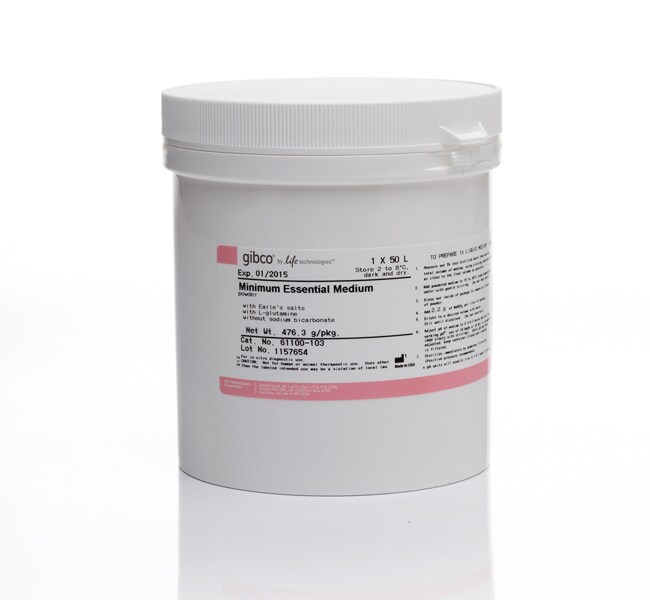Search Thermo Fisher Scientific

MEM, powder
| Catalog Number | Quantity |
|---|---|
| 61100103 | 50 L |
61100061 | 10 x 1 L |
61100087 | 10 L |
Minimum Essential Medium (MEM) is one of the most commonly used of all cell culture media. MEM can be used with a variety of suspension and adherent mammalian cells, including HeLa, BHK-21, 293, HEP-2, HT-1080, MCF-7, fibroblasts, and primary rat astrocytes. We offer a variety of Gibco™ MEM modifications for a range of cell culture applications. Find the right formulation using the media selector tool.
This MEM is modified as follows:
| With | Without |
| • L-glutamine | • HEPES |
| • Phenol Red | • Sodium Bicarbonate |
The complete formulation is available.
Gibco™ MEM, developed by Harry Eagle, was based on his earlier formulation of Basal Medium Eagle (BME). Many other modifications of MEM followed, including Glasgow’s MEM, MEM α, DMEM, and Temin’s Modification. MEM is available with Earle’s salts for use in a CO2 incubator, or with Hanks' salts for use without CO2. This product is made with Earle’s salts.
Using MEM
MEM contains no proteins, lipids, or growth factors. Therefore, MEM requires supplementation, commonly with 10% Fetal Bovine Serum (FBS). MEM uses a sodium bicarbonate buffer system (2.2 g/L) and therefore requires a 5–10% CO2 environment to maintain physiological pH. Powder forms of Gibco™ cell culture medium require sodium bicarbonate supplementation, pH adjustment, and filtration at the time of preparation (see protocol for details).
Shipping conditions: Ambient
Shelf life: 36 months from date of manufacture